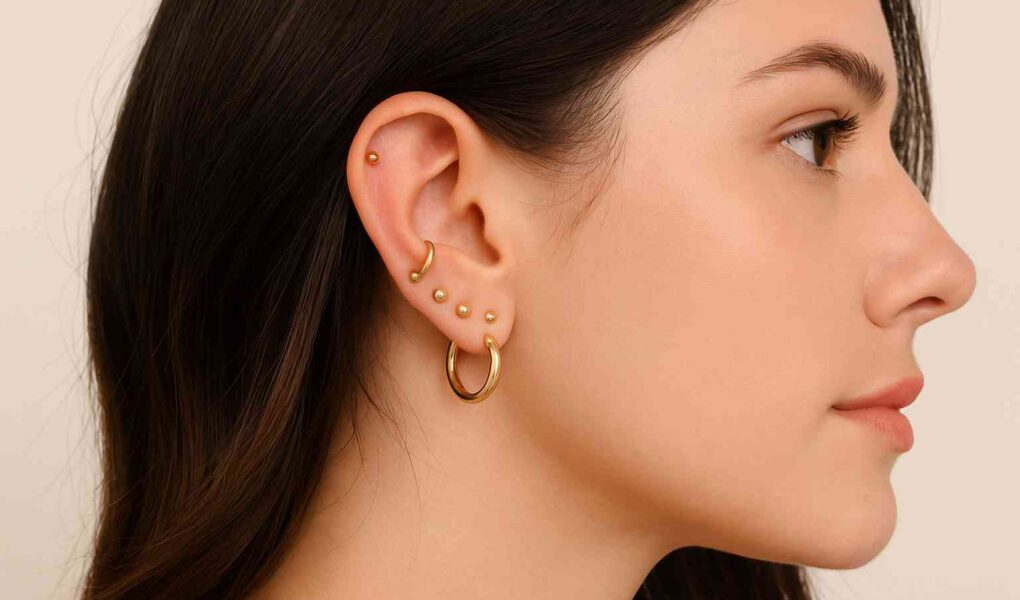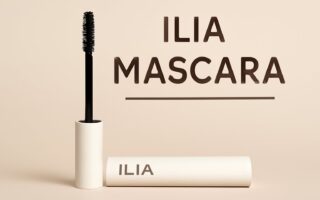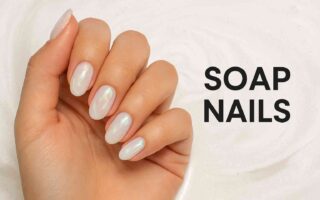Ear piercings have evolved far beyond the traditional single lobe piercing. Today, they’re a bold beauty statement, a subtle way to elevate your style, or even a form of personal expression. From the classic helix to the trendy conch or dainty tragus, ear piercings are having a serious moment in fashion and self-care circles alike.
But while they may look simple and stylish, choosing the right piercing and caring for it properly requires more thought than many expect. Whether you’re thinking about your first piercing or adding to your existing stack, knowing what to expect helps ensure a beautiful, infection-free experience.
In this guide, we’ll walk you through everything you need to know about ear piercings: types, pain levels, healing tips, aftercare advice, and even product suggestions to keep your new bling looking fabulous and healthy. Let’s get into it!
Understanding Different Types of Ear Piercings
Classic Lobe Piercing
The most common and least painful, the lobe piercing is where most of us start. Healing time is quick usually 6 to 8 weeks and it’s one of the easiest to care for.
Upper Lobe and Stacked Lobes
These are simply additional lobe piercings positioned slightly higher on the ear. They’re great for layering dainty studs or tiny hoops for a minimalist-chic look.
Helix Piercing
Placed in the upper cartilage, helix piercings are versatile and stylish. Healing can take 3 to 6 months, depending on your skin type and care routine.
Tragus and Anti-Tragus
These sit in the small areas of cartilage closest to your face. Though smaller in size, they can be more sensitive due to the thick cartilage. Healing time is around 6–12 months.
Conch Piercing
Located in the middle part of the ear, the conch allows for eye-catching jewelry like cuffs or studs. It’s a bit more painful due to its thickness but incredibly bold and unique.
Daith and Rook
These inner cartilage piercings have gained popularity not just for their edgy look but also rumored benefits like migraine relief (especially for the daith). Healing takes time often up to 12 months.
Pain Levels: What Should You Expect?
Pain is subjective, but understanding what to expect can ease anxiety. Lobe piercings are generally low-pain and quick. Cartilage piercings like the rook or conch tend to pinch or throb briefly during the procedure, then dull into mild soreness over the next few days.
Pro tip: Go to a professional piercer who uses a needle rather than a piercing gun. It’s cleaner, safer, and causes less trauma to the tissue.
How to Choose the Right Ear Piercing for You
Consider Your Ear Shape
Not every ear has the right structure for every type of piercing. For instance, some people don’t have a defined rook ridge, making that piercing unsuitable. A professional piercer can guide you based on your anatomy.
Match It With Your Style
Are you into delicate jewelry, edgy hoops, or statement studs? Choose piercings that complement your personal aesthetic. Mixing metals, gemstone accents, or tiny chains can bring your ear stack to life.
Think Long-Term
Cartilage piercings require months of healing and consistent care. If you’re prone to keloids or scarring, consult with your dermatologist first. Also, consider your work environment or dress code some jobs may restrict visible piercings.
Healing Process and Aftercare Tips
First 24 Hours
Keep your hands off! The less you touch your new piercing, the lower the risk of infection. Gently pat around it with a saline solution twice a day using a clean gauze or cotton pad.
Weeks 1–4
During this time, stick to hypoallergenic jewelry titanium or surgical steel is ideal. Avoid swimming pools, saunas, or sleeping directly on the piercing side. Redness, light swelling, or a clear discharge is normal.
Months 2–6
Cartilage piercings especially need extended care. Avoid rotating the jewelry (that’s outdated advice), and continue gentle cleansing. Your piercing may look healed outside but still be vulnerable inside.
Signs of Trouble
If you notice persistent swelling, warmth, pus, or severe pain, consult a doctor or piercing professional. Ignoring these signs can lead to infections or rejection.
Best Products to Support Healing
Sterile Saline Spray
Look for solutions like NeilMed Piercing Aftercare. It’s gentle, effective, and easy to apply.
Hypoallergenic Jewelry
Brands like Anatometal and Maria Tash offer high-quality metals that reduce allergic reactions and irritation.
Tea Tree Oil (Diluted)
A drop of diluted tea tree oil can help reduce inflammation or minor bumps but always consult your piercer before using any non-standard product.
Chamomile Compress
A natural solution for soothing swollen cartilage. Steep a chamomile tea bag, let it cool, and use it as a compress for 5–10 minutes.
Styling Your Ear Piercings
Layering Multiple Piercings
The curated ear trend is all about balance. Mix dainty studs with statement hoops or experiment with different placements for a bold yet elegant look.
Matching Metals
Gold with gold, silver with silver—unless you’re purposely clashing for an eclectic style. A consistent metal tone creates a polished aesthetic.
Seasonal Style
Switch up your jewelry for summer festivals or winter elegance. Just make sure you’re not changing jewelry before it’s healed fully.
When Can You Change Your Jewelry?
Changing your earring too early is the fastest way to invite infection. For lobes, wait at least 6–8 weeks. For cartilage, wait 3–6 months sometimes longer. Always clean your hands and the new jewelry before swapping.
If in doubt, have your piercer assist with the first change. They can ensure the fit is correct and it won’t irritate your healing ear.
Pros and Cons of Ear Piercings
Pros:
- Affordable beauty investment
- Endless styling options
- Self-expression and creativity
- Can highlight facial features
Cons:
- Long healing times for cartilage
- Risk of infection or bumps
- Not suitable for everyone’s skin or lifestyle
- Workplace limitations in some industries
When to See a Professional
Don’t try to pierce yourself at home or let a friend “do it for free.” Proper piercing requires sterile tools, knowledge of anatomy, and aftercare expertise.
Visit a licensed studio with strong reviews and professional certifications. Ask about sterilization, jewelry quality, and their healing policy.
Conclusion
Ear piercings are more than just a trend—they’re a timeless way to express your individuality, elevate your style, and explore personal beauty preferences. Whether you’re opting for a simple second lobe or planning an elaborate ear stack, it’s essential to know what you’re getting into.
With proper planning, safe piercing practices, and diligent aftercare, you’ll enjoy your new piercings for years to come. So go ahead—book that appointment, find the perfect studs, and join the world of ear-piercing fashion.
Have a favorite piercing or aftercare tip? Share your experience in the comments—we’d love to hear from you!
FAQs About Ear Piercings
How long do ear piercings take to heal?
Lobe piercings usually heal in 6–8 weeks, while cartilage piercings can take 3–12 months depending on placement and care.
Can I go swimming with a new piercing?
It’s best to avoid swimming pools, hot tubs, or ocean water for at least 4–6 weeks after getting a piercing to prevent infection.
What’s the best metal for sensitive ears?
Titanium, surgical stainless steel, and 14k gold are great options for sensitive skin as they’re hypoallergenic and non-reactive.
Is it okay to sleep on a fresh piercing?
Avoid sleeping on the pierced side for the first few months. Using a travel pillow with a hole in the center can reduce pressure and friction.
Do ear piercings close up if I remove the jewelry?
Yes—especially if the piercing is new. Even older piercings can shrink or close over time without jewelry, so keep it in if you want to maintain it.



